Browse by Tags: ukoerprs
 | Up a level |
Number of items: 82.
A brief Introduction to Sikhism for students (handout)
Shared with the World by Dr Opinderjit Takhar
This handout accompanies the presentation outlining a Quick Introduction to Sikhism
Shared with the World by Dr Opinderjit Takhar
AMEZ St George's Street Wolverhampton
Shared with the World by Dr Deirdre Burke
This PowerPoint provides a range of images from the AMEZ (African Methodist Episcopal Zion) Church in Wolverhampton. This is a Black-Led church founded in the UK in the late 1960s.
Shared with the World by Dr Deirdre Burke
Birmingham Progressive Synagogue outside
Shared with the World by Dr Deirdre Burke
Image of the outside of the new progressive synagogue.
Shared with the World by Dr Deirdre Burke
Book Review CARS check
Shared with the World by Dr Deirdre Burke
This exercise is used with first year Religious Studies students on the Judaism module. They are required to complete a book review, the first part of which is to undertake a CARS check on the author. The exercise includes two examples of CARS author checks to help develop their understanding of the task.
Shared with the World by Dr Deirdre Burke
Calligraphy inside mosque dome
Shared with the World by Dr Deirdre Burke
Calligraphy in Arabic and English inside dome.
Shared with the World by Dr Deirdre Burke
Caste and Sikhism
Shared with the World by Dr Opinderjit Takhar
This is material used within a second year module on Sikhism. it provides information on how caste is operative within Sikhism and has created distinct groups such as the Ravidasis and Valmikis. This material could also be used by historians and sociologists.
Shared with the World by Dr Opinderjit Takhar

Christianity in Wolverhampton
Shared with the World by Dr Deirdre Burke
This collection brings together a range of files, PowerPoints, images and videos on Christian places of worship in Wolverhampton.
Shared with the World by Dr Deirdre Burke
Courting Controversy
Shared with the World by Dr Deirdre Burke
PowerPoint for PRS conference on issues around field visits, and the way iPods and Faith Guiding initiatives can address pitfalls.
Shared with the World by Dr Deirdre Burke
Feedback form explained
Shared with the World by Dr Deirdre Burke
Feedback form with an explanation of the nature and purpose of each section, intended for students.
Shared with the World by Dr Deirdre Burke

Feedback resources for Religious Studies
Shared with the World by Dr Deirdre Burke
A collection of resources to support RS tutors in providing feedback to students and activities for students to work on tutor feedback.
Shared with the World by Dr Deirdre Burke

Feedback strategies
Shared with the World by Dr Deirdre Burke
Collection brings together a range of resources for use by staff to help students get more out of tutor feedback on their work.
Shared with the World by Dr Deirdre Burke
Font: St Peter's Collegiate Church
Shared with the World by Dr Deirdre Burke
short video explaining the font and the symbolism.
Shared with the World by Dr Deirdre Burke
Fryer Street Synagogue
Shared with the World by Dr Deirdre Burke
This short video explores the history and key features of a purpose built synagogue in Wolverhampton.
Shared with the World by Dr Deirdre Burke
Fryer Street Synagogue video
Shared with the World by Dr Deirdre Burke
This short English Heritage video is part of the 'Our Faith Buildings' project from 2005. In this extract Deirdre Burke explains aspects of the history and architecture of the synagogue.
Shared with the World by Dr Deirdre Burke
Geographies of Religion
Shared with the World by Dr Deirdre Burke
PowerPoint to support presentation on use of iPods in field visits.
Shared with the World by Dr Deirdre Burke
Glossary of terms in Sikhism
Shared with the World by Dr Opinderjit Takhar
This handout is used by students studying Sikhism at the University of Wolverhampton. They are encouraged to use the spellings in Punjabi for their assignments.
Shared with the World by Dr Opinderjit Takhar
God and the Human Condition in Sikh teachings
Shared with the World by Dr Opinderjit Takhar
This is a detailed look at what Sikh teachings from the Guru Granth Sahibji teach about God and the Human condition.
Shared with the World by Dr Opinderjit Takhar
God and the human condition - Sikhism
Shared with the World by Dr Opinderjit Takhar
This handout summarizes the teachings of the Guru Granth Sahib about God and the soul's entrapment in samsara (reincarnation).
Shared with the World by Dr Opinderjit Takhar
Guru Gobind Singh and the Formation of the Khalsa
Shared with the World by Dr Opinderjit Takhar
This presentation examines the reasons and order of eents behind the creation of the Khalsa in 1699 CE.
Shared with the World by Dr Opinderjit Takhar
Guru Nanak's teachings
Shared with the World by Dr Opinderjit Takhar
This handout for students highlights the teachings of the first Sikh Guru, Guru Nanak. It also explores possible influences on the thought of Guru Nanak.
Shared with the World by Dr Opinderjit Takhar
HEIR Strategies to get more out of feedback
Shared with the World by Dr Deirdre Burke
PowerPoint to support workshop at Institutional Research in Higher Education conference, Dublin June 2010.
Shared with the World by Dr Deirdre Burke

Holocaust Memorial Day 2010
Shared with the World by Dr Deirdre Burke
This PowerPoint introduces a range of issues about the commemoration on the Holocaust. It is used with first year History and Religious Studies students to explore reasons why there are so many memorial days.
Shared with the World by Dr Deirdre Burke
Holocaust Memorial Day Trust
Shared with the World by Dr Deirdre Burke
Link to the Holocaust Memorial Day Trust website, with the 2010 theme 'The legacy of hope' to mark the 65th anniversary of the liberation of Auschwitz-Birkenau on 27th January 1945.
Shared with the World by Dr Deirdre Burke
HumBox Launch RS
Shared with the World by Dr Deirdre Burke
PowerPoint to share and showcase aspects for Religious Studies.
Shared with the World by Dr Deirdre Burke
Image Synagogue intercom
Shared with the World by Dr Deirdre Burke
Image of security arrangement at synagogue, intercom to gain entrance.
Shared with the World by Dr Deirdre Burke

Images of places of worship
Shared with the World by Dr Deirdre Burke
Collection of images of places of worship
Shared with the World by Dr Deirdre Burke
Introductions: advice for students
Shared with the World by Dr Deirdre Burke
Single webfolio page to help students develop their introduction to an essay. The page contains a summary of key points and links to materials to see exemplars and tutorials on writing introductions.
Shared with the World by Dr Deirdre Burke
Introductory Jewish quiz
Shared with the World by Dr Deirdre Burke
This short quiz encourages students to think about their knowledge of Jews and Judaism at the start of their module on Judaism. It could be used within Religious Studies modules on world religions, or in other subjects when they touch on Jewish topics.
Shared with the World by Dr Deirdre Burke

Islam
Shared with the World by Dr Deirdre Burke
Collection of PowerPoints and images to support teaching of aspects of Islam.
Shared with the World by Dr Deirdre Burke
Issues of Identity in the Sikh Panth
Shared with the World by Dr Opinderjit Takhar
The issue of Sikh identity is one that has given rise to much debate over the years. This presentation examines some aspects and issues relating to Sikh Identity.
Shared with the World by Dr Opinderjit Takhar

Judaism
Shared with the World by Dr Deirdre Burke
This collection brings together a range of materials relating to Jews and Judaism. They are specifically relevant to studies within Religious Studies, but may also be of use for History and Literary studies that relate to Jews and/ or Judaism.
Shared with the World by Dr Deirdre Burke
Judaism: Book Review example and feedback
Shared with the World by Dr Deirdre Burke
This provides an example of an assessed task for students. They are able to see the feedback proforma to be used, with a marked example. Whilst this form is specific to this task, it could be adapted for other uses, to prepare students for the feedback they will receive on their work.
Shared with the World by Dr Deirdre Burke
Lesson Plan: The Crusades
Shared with the World by Dr Deirdre Burke
Brief lesson plan which draws on materials on the theme of
Shared with the World by Dr Deirdre Burke
Manchester Jewish Museum
Shared with the World by Dr Deirdre Burke
This image shows the outside of the Manchester Jewish Museum. The building was originally built as a Sephardi Synagogue, so is more ornate than the usual Ashkenazi style of synagogue that most synagogues in the UK follow.
Shared with the World by Dr Deirdre Burke
Mosque inside Dome
Shared with the World by Dr Deirdre Burke
Image of the inside of the dome at Wolverhampton Central Mosque, showing calligraphy.
Shared with the World by Dr Deirdre Burke
Mosques in Wolverhampton
Shared with the World by Dr Deirdre Burke
This PowerPoint provides information about mosques in Wolverhampton, with maps showing their location and pictures of mosques. This could be used to introduce aspects of Islam and mosques within Religous or cultural studies.
Shared with the World by Dr Deirdre Burke
Mosques in Wolverhampton: features
Shared with the World by Dr Deirdre Burke
PowerPoint to support teaching about mosques in the local community.
Shared with the World by Dr Deirdre Burke

Muslims in Britain images
Shared with the World by Dr Deirdre Burke
This collection of images can be used to support teaching or research about Muslims in Britain.
Shared with the World by Dr Deirdre Burke

Muslims in Wolverhampton collection
Shared with the World by Dr Deirdre Burke
This collection holds a range of resources about Islam and Muslims in Wolverhampton.
Shared with the World by Dr Deirdre Burke

PRS Courting Controversy
Shared with the World by Dr Deirdre Burke
Resources from the PRS conference, July 2010, on the theme of 'Courting Controversy.' Theoretical papers and practical classroom sessions.
Shared with the World by Dr Deirdre Burke

Pagans and Christians OneShare workshop
Shared with the World by Dr Deirdre Burke
Resource exercise for the workshop
Shared with the World by Dr Deirdre Burke
Possible influences on the thought of Guru Nanak
Shared with the World by Dr Opinderjit Takhar
There are a number of theories as to whether the religious thought of the first Sikh Guru, Guru Nanak, may have been influenced by other traditions of the time. This presenttation explores soem of thses possible influences.
Shared with the World by Dr Opinderjit Takhar
Predestination or karma in Sikh philosophy
Shared with the World by Dr Opinderjit Takhar
This presentation is delivered to students who take the Sikhism Module. It looks at the apparent paradox in the teachings of Guru Nanak, especially, with regard to whether it is one's deeds or the Will of God that is a prerequisite to Mukti (the release from the cycle of reincarnation - samsara).
Shared with the World by Dr Opinderjit Takhar
Reading from Adi Granth
Shared with the World by Dr Deirdre Burke
This is a short video of a reading from the Adi Granth in the Ramgharia Board gurdwara in Wolverhampton.
Shared with the World by Dr Deirdre Burke
Religions in Wolverhampton Treasure Hunt
Shared with the World by Dr Deirdre Burke
This 'treasure hunt' asks students to find out information from the urls provided.
Shared with the World by Dr Deirdre Burke
Sikh Dharma of the Western Hemisphere
Shared with the World by Dr Opinderjit Takhar
This presentation is delivered to second year students of Sikhism. There is an increasing number of non-Punjabis following the teachings of the Sikh Gurus. Yogi Bhajan was instrumental in introducing Sikhism to his American yoga students. Initially this was delivered under the activities of the Sikh Dharma of the Western Hemisphere.
Shared with the World by Dr Opinderjit Takhar
Sikh Identity handout for students
Shared with the World by Dr Opinderjit Takhar
This handout accompanies a presentation looking at issues relating to Sikh identity.
Shared with the World by Dr Opinderjit Takhar
Sikh Practices
Shared with the World by Dr Opinderjit Takhar
This presentation, delivered to second year undergraduate students, takes a look at soem of the dominant practices amongst Sikhs.
Shared with the World by Dr Opinderjit Takhar
Sikh practices handout for students
Shared with the World by Dr Opinderjit Takhar
This handout for students summarizes the main practices found amongst the Sikhs.
Shared with the World by Dr Opinderjit Takhar

Sikhism
Shared with the World by Dr Deirdre Burke
Range of resources for Sikhism, original use for Religious Studies. They could be used to explore aspects of Sikh philosophy, or to understand a local religious community.
Shared with the World by Dr Deirdre Burke
Synagogue sanctuary
Shared with the World by Dr Deirdre Burke
Picture of the sanctuary at Birmingham Progressive Synagogue (now demolished). Note the position of the bimah in a Progressive synagogue, as part of the platform in front of the ark.
Shared with the World by Dr Deirdre Burke
Synagogue sanctuary
Shared with the World by Dr Deirdre Burke
Picture of the sanctuary in a progressive synagogue. (Birmingham Progressive Synagogue built in 1930s, now demolished.)
Shared with the World by Dr Deirdre Burke
The Beasts of Belsen
Shared with the World by Dr Deirdre Burke
This resource is based around a newsfilm archive item 'The Beasts of Belsen,' using the GLO maker to develop interactive activities for students.
Shared with the World by Dr Deirdre Burke

The Crusades
Shared with the World by Dr Deirdre Burke
Collection of materials for an emergency lesson.
Shared with the World by Dr Deirdre Burke
The Development of the Panth
Shared with the World by Dr Opinderjit Takhar
This handout highlights the main developments and Institutions in Sikhism from the second to ninth Sikh Gurus
Shared with the World by Dr Opinderjit Takhar
The Guru Granth Sahibji
Shared with the World by Dr Opinderjit Takhar
This presentation explores the compilation and content of the Guru Granth Sahib - the eternal Guru of the Sikhs.
Shared with the World by Dr Opinderjit Takhar
The Mosque: funerary practices
Shared with the World by Dr Deirdre Burke
images in a PowerPoint to show features of a mosque concerned with funerary practices.
Used with undergraduate Religious Studies students.
Shared with the World by Dr Deirdre Burke
The Namdharis
Shared with the World by Dr Opinderjit Takhar
A brief summary of the Namdharis, a handout for students.
Shared with the World by Dr Opinderjit Takhar
The Namdharis
Shared with the World by Dr Opinderjit Takhar
This presentation looks at a sect within Sikhism. The Namdharis are regarded as heretics by many Sikhs due to their tradition of continuing the line of human Gurus. In effect, they do not give Guru status to the Adi Granth. The presentation looks at their theories regarding the 'drama' enacted by Guru Gobind Singh in 1708 and examines their justification for declaring that the words "Guru Maniyo Granth" were not uttered.
Shared with the World by Dr Opinderjit Takhar
The Ravidasi Community
Shared with the World by Dr Opinderjit Takhar
A study of the Ravidasi community is an important feature for students looking at the issue of caste within Sikhism. This presentation examines the teachings of the Sikh Gurus towards caste. It looks at the contradictions between religious teachings with actual praxis. A substantial proportion of the Ravidasi community claim that they have been discriminated against by higher caste Sikhs because of the stigma of untouchability associated with the traditional caste (zat) occupation of the chamars.
Shared with the World by Dr Opinderjit Takhar
The Ravidasis
Shared with the World by Dr Opinderjit Takhar
A handout for students summarizing the main beliefs and practices of the Ravidasi community.
Shared with the World by Dr Opinderjit Takhar
The Valmikis
Shared with the World by Dr Opinderjit Takhar
This presentation explores the origins, beliefs and practices of the Valmiki community. The Valmikis are a caste within the Dalit community.
Shared with the World by Dr Opinderjit Takhar
The caste system and the Sikhs
Shared with the World by Dr Opinderjit Takhar
Thsi handout for students summarizes the main points about the Sikhs' attitudes towards the caste system.
Shared with the World by Dr Opinderjit Takhar
The font: video explanation
Shared with the World by Dr Deirdre Burke
The PowerPoint contains details about the font in The Collegiate Church of St. Peter, Wolverhampton. The video extract presents the history of the font and explains the symbolism of sections.
Shared with the World by Dr Deirdre Burke
The second to ninth Sikh Gurus
Shared with the World by Dr Opinderjit Takhar
The development of the Sikh Panth through the institutions made by the second to the ninth Sikh Gurus is explored in this presentation.
Shared with the World by Dr Opinderjit Takhar
Tour of the collegiate Church of St. Peter Wolverhampton
Shared with the World by Dr Deirdre Burke
This tour enables students to explore the church in their own time and pace, providing a structure and details about the items in the church. The tour can be loaded on to MP4 players.
Shared with the World by Dr Deirdre Burke
Understanding Sikhism through Informant Testimonies
Shared with the World by Dr Opinderjit Takhar
This presentation looks at the importance of informant testimonies to enhance an understanding of Sikhism. It is an important tool for students looking at research methods within studying religion. The presentation highlights the importance of overcoming stereotypical representations of the Sikh community.
Shared with the World by Dr Opinderjit Takhar
Variations of the Adi Granth
Shared with the World by Dr Opinderjit Takhar
This handout summarizes the many variations found of the Sikh Holy Scripture - the Guru Granth Sahibji
Shared with the World by Dr Opinderjit Takhar

Videos of places of worship
Shared with the World by Dr Deirdre Burke
Collection of videos for places of worship
Shared with the World by Dr Deirdre Burke
Western Studies of the Prophet Muhammad
Shared with the World by Dr Deirdre Burke
PowerPoint to support session on Western studies of the Prophet Muhammad, introduces a range of critical studies.
Shared with the World by Dr Deirdre Burke

Wolverhampton Buddha Vihara
Shared with the World by Dr Deirdre Burke
Collection of materials on the Dr Ambedkar Buddha Vihara in Wolverhampton. Mostly images, but also a MP4 audio tour, and a PowerPoint.
Shared with the World by Dr Deirdre Burke
Wolverhampton Buddha Vihara 1. Ambedkar Motto
Shared with the World by Dr Deirdre Burke
This picture presents the engraving of Ambedkar's motto: educate, agitate and organise.
Shared with the World by Dr Deirdre Burke
Wolverhampton Buddha Vihara 1. Ambedkar bust
Shared with the World by Dr Deirdre Burke
This is a picture of the bust of Dr Ambedkar, in the vihara in Wolverhampton founded by his followers.
Shared with the World by Dr Deirdre Burke
Wolverhampton Buddha Vihara 1. Ambedkar exterior
Shared with the World by Dr Deirdre Burke
Picture of the outside of the Buddha Vihara in Wolverhampton dedicated to Dr Ambedkar.
Shared with the World by Dr Deirdre Burke
Wolverhampton Buddha Vihara 1. Ambedkar in Shrine Room
Shared with the World by Dr Deirdre Burke
Picture of Dr Ambedkar found within the Shrine Room.
Shared with the World by Dr Deirdre Burke
Wolverhampton Buddha Vihara 1. Ambedkar statue
Shared with the World by Dr Deirdre Burke
Picture showing the statue of Dr Ambedkar.
Shared with the World by Dr Deirdre Burke

Wolverhampton Buddha Vihara collection
Shared with the World by Dr Deirdre Burke
collection of materials about Dr Ambedkar Buddha Vihara in Wolverhampton.
Shared with the World by Dr Deirdre Burke
Wolverhampton Central Mosque
Shared with the World by Dr Deirdre Burke
This PowerPoint provides a range of images from a field visit to the Central Mosque. This is used within Religious Studies to explore aspects of Islam in the local community.
Shared with the World by Dr Deirdre Burke
Wolverhampton Central Mosque: features
Shared with the World by Dr Deirdre Burke
PowerPoint to identify key features of a large purpose built mosque.
Shared with the World by Dr Deirdre Burke
Workshop: strategies for students to get more out of feedback
Shared with the World by Dr Deirdre Burke
This PowerPoint sets out a range of strategies that can be used to help students get more out of tutor feedback on their work. This was used for workshops at the 2010 Higher Education Academy conference and HEIR 2010 (Higher Education Institutional Research.)
Shared with the World by Dr Deirdre Burke
iPod Poster
Shared with the World by Dr Deirdre Burke
Poster which summarises results from the use of iPods for field visits in Religious Studies project.
Shared with the World by Dr Deirdre Burke
![[img]](http://www.humbox.ac.uk//1811/1.hassmallThumbnailVersion/File0002.jpg)
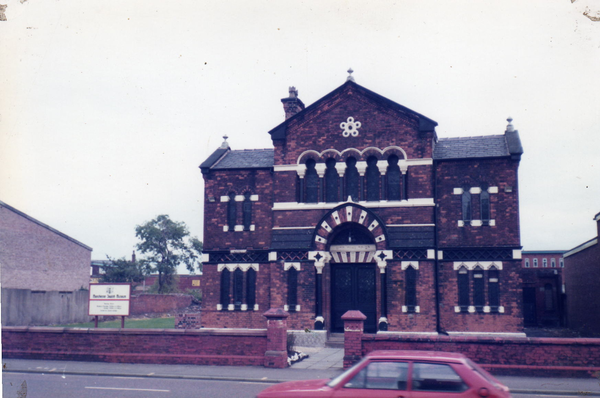
![[img]](http://www.humbox.ac.uk//1466/1.hassmallThumbnailVersion/BPS_1.jpg)
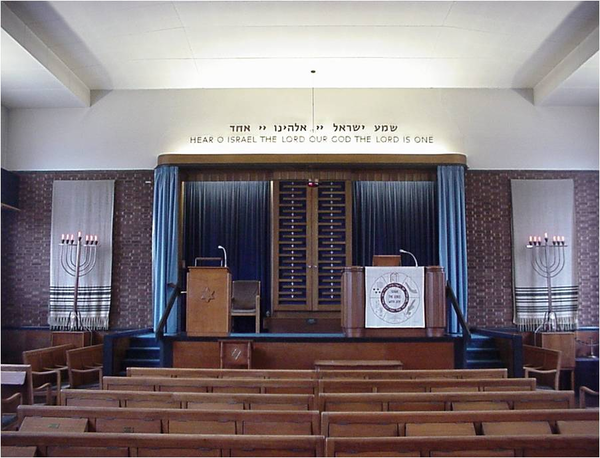
![[img]](http://www.humbox.ac.uk//537/2.hassmallThumbnailVersion/Belsen_1.jpg)
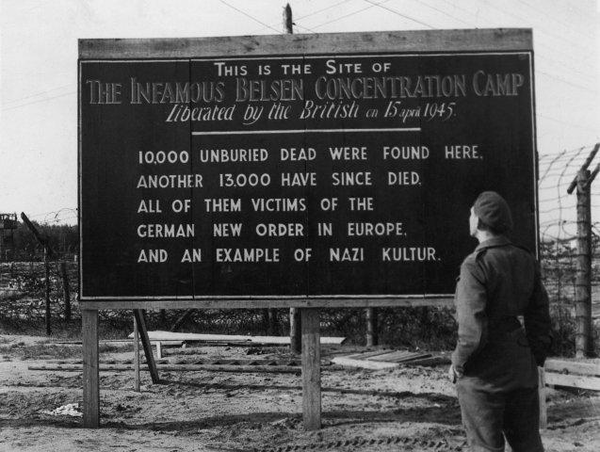
![[img]](http://www.humbox.ac.uk//1818/1.hassmallThumbnailVersion/Ambedkar_motto.jpg)
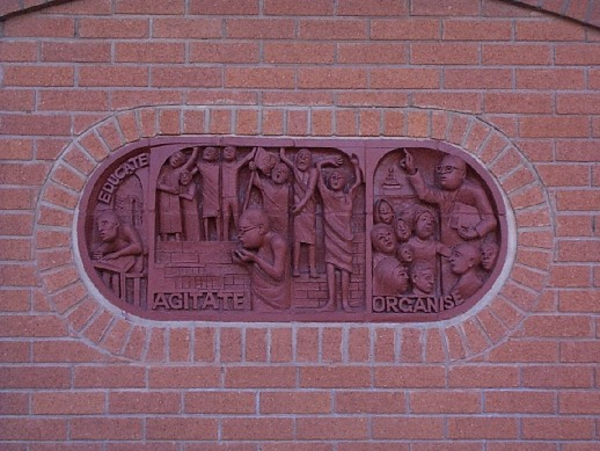
![[img]](http://www.humbox.ac.uk//1812/1.hassmallThumbnailVersion/Ambedkar_bust.jpg)
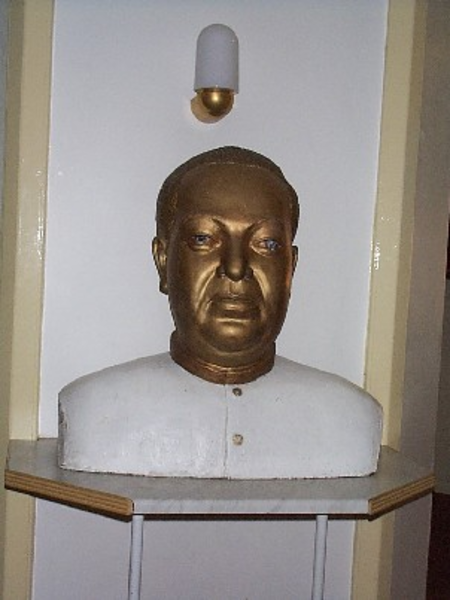
![[img]](http://www.humbox.ac.uk//1813/1.hassmallThumbnailVersion/Ambedkar_exterior.jpg)
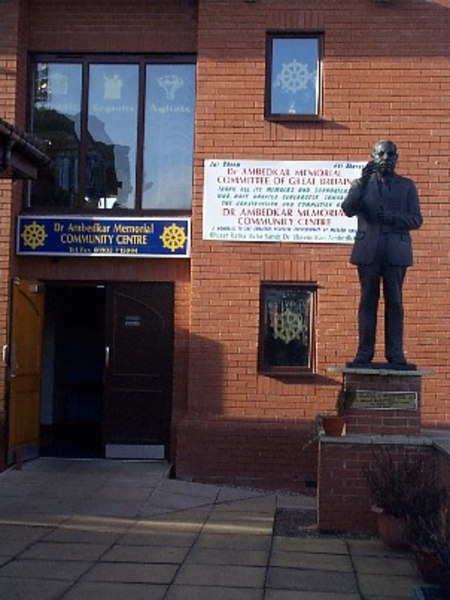
![[img]](http://www.humbox.ac.uk//1815/1.hassmallThumbnailVersion/Ambedkar_statue_close-up.jpg)



